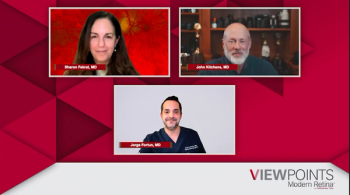
No significant association found between anti-VEGF therapy for ROP and pulmonary hypertension
Anti-VEGF therapy for ROP has potential ocular and systemic advantages compared with laser but also noted that the systemic risks of anti-VEGF therapy in these infants need to be quantified.
Christopher Nitkin, MD, from Children’s Mercy Kansas City, Division of Neonatology, Department of Pediatrics, University of Missouri Kansas City School of Medicine, Kansas City, and colleagues reported that use of intraocular anti-vascular endothelial growth factor (VEGF) drugs in patients with retinopathy of prematurity (ROP) was not associated with greater use of pulmonary vasodilators after adjustment for hospital and year.1
He explained that anti-VEGF therapy for ROP has potential ocular and systemic advantages compared with laser but also noted that the systemic risks of anti-VEGF therapy in these infants need to be quantified.
Pulmonary hypertension study
The investigators conducted a multicenter retrospective cohort study that included neonatal intensive care units in 48 US hospitals in the Pediatric Health Information System database from 2010 to 2020. The goal was to investigate an association with increased risk of pulmonary hypertension in these infants following treatment with anti-VEGF therapy compared with laser treatment.
The main outcome was the use of new pulmonary vasodilators at least 7 days after ROP therapy. The odds of undergoing an echocardiogram after 30 days of age was included to adjust for secular trends and interhospital variation in screening for pulmonary hypertension.
A total of 1,577 patients (55.9% male) were included. Of these, 689 were treated with laser photocoagulation and 888 received anti-VEGF treatment (95% bevacizumab [Avastin, Genentech], or 5% ranibizumab [Lucentis, Genentech]).
The first treatment for ROP was at a median of 36.4 weeks’ postmenstrual age (interquartile range, 34.6-38.7 weeks).
The results indicated that more infants who received anti-VEGF therapy were treated for pulmonary hypertension, but after adjustment for hospital and year, this finding did not reach significance (6.7%; 95% confidence interval [CI], 2.6-6.9 vs. 4.3% 95% CI, 4.4-10.2; adjusted odds ratio, 1.62; 95% CI, 0.90-2.89; P = 0.10).
“Anti-VEGF therapy was not associated with greater use of pulmonary vasodilators after adjustment for hospital and year. Our findings suggest exposure to anti-VEGF therapy may be associated with pulmonary hypertension, although we cannot exclude the possibility of residual confounding based on systemic comorbidities or hospital variation in practice. Future studies investigating this possible adverse effect seem warranted,” Nitkin concluded.
Reference
Nitkin CR, Bamat NA, Lagatta J, et al. Pulmonary hypertension in preterm infants treated with laser vs anti–vascular endothelial growth factor therapy for retinopathy of prematurity. JAMA Ophthalmol. 2022; Published online October 6, 2022. doi:10.1001/jamaophthalmol.2022.3788
Newsletter
Keep your retina practice on the forefront—subscribe for expert analysis and emerging trends in retinal disease management.











































